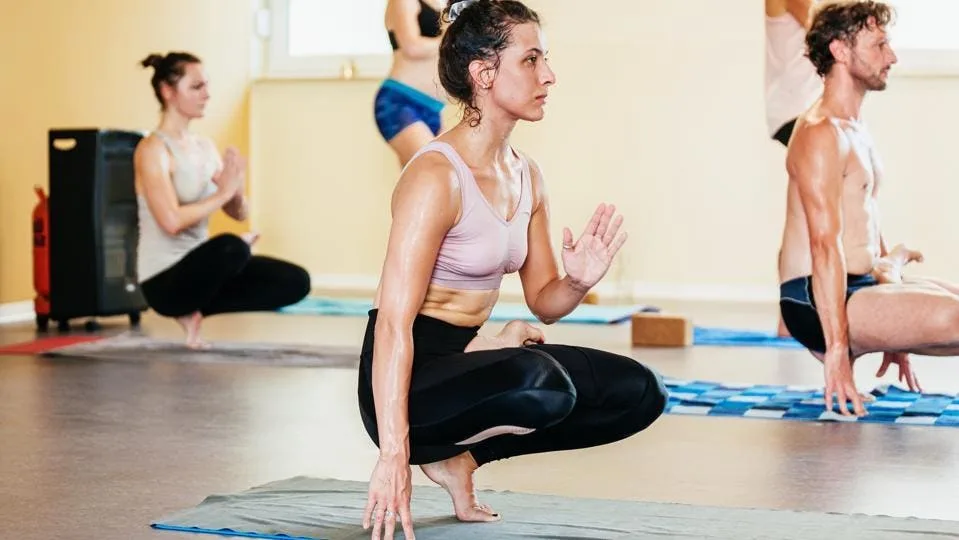[ad_1]
Hot yoga may offer several health and wellness benefits, including the following.
Improved Flexibility
Hot yoga may improve flexibility over time by increasing range of motion, as heat allows muscles to warm up more quickly. A small 2019 study in the International Journal of Environmental Research and Public Health with 23 participants aged 60 to 80 who practiced a 30-minute yoga session once a week in a sauna heated to 122 degrees (15 degrees hotter than Bikram yoga) found participants showed improved flexibility over the course of eight weeks.
“When tight muscles or sore joints get warmed up, your blood vessels get bigger, enabling more blood, oxygen and nutrients to be delivered to tissues throughout your body, improving your circulation,” says Wexler.
Enhanced Mood
Even one hot yoga session can elevate dopamine levels and cause an endorphin surge that boosts your mood and chills your mind, says Wexler. Endorphins are hormones released during exercise that can relieve pain and improve your sense of well-being. Dopamine is a chemical messenger from the brain involved in movement, cognition, sleep, arousal and mood.
A small study presented at the 2017 convention of the American Psychological Association with 52 women ages 25 to 45 who participated in twice-weekly Bikram classes for eight weeks found the women who regularly did hot yoga had fewer symptoms of depression after eight weeks than the control group.
Reduced Stress
A 2017 study in the Journal of Science and Medicine in Sport found that physically inactive, stressed adults who participated in three to five hot yoga classes per week reported significantly improved self-perceived stress and self-confidence at the end of 16 weeks. Heat may also decrease cortisol (the stress hormone), reducing anxiety and often improving sleep, says Wexler.
Improved Cardiovascular Health
Because heat increases the heart rate, hot yoga classes may offer better cardiovascular exercise compared to traditional yoga, says Wexler. One 2018 study of elite female hockey players in the Journal of Strength and Conditioning Research found that practicing hot yoga improved plasma volume (increasing the amount of blood returning to the heart) and cardiovascular performance among the athletes.
Another 2017 study in the Journal of Bodywork and Movement Therapies found a relatively short-term Bikram yoga practice (three Bikram classes per week for eight weeks) may improve vascular function and blood flow in middle-aged and older adults.
Improved Muscle Strength and Balance
One review of scientific literature presented at the 2017 American Psychological Association convention suggests that a regular Bikram practice may improve strength and balance. In a very small study included in the review, 21 healthy adults practiced Bikram hot yoga three times a week for eight weeks. At the end of that period, participants showed significant improvements in balance, sit-and-reach capability and improved upper body range of motion.
Enhanced Skin Quality
One of the benefits of sweating more in hot yoga is that it generally increases circulation, which can in turn bring more nutrients to the skin. A 2021 study in Glycative Stress Research found that after completing two 60-minute hot yoga sessions per week for 12 weeks, 48 female volunteers had increased the moisture content, elasticity, and texture of their skin leading researchers to conclude that hot yoga may also offer dermal anti-aging benefits.
[ad_2]



